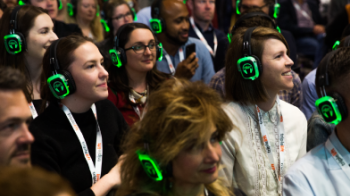General principles for creative best practice
This section draws together some guiding principles for creative best practice that are applicable to almost all forms of digital advertising.
1. Understand and keep focus on your campaign objective
When designing and building advertising each decision you make will have its pros and cons. To help make these decisions it’s essential to understand the campaign's objective and what you’re ‘really’ trying to achieve. Ensuring you agree upon one clear objective at the start of the process is crucial so you’re not pulled in contradictory directions by conflicting agendas.
For example, if you’re trying to drive traffic through to a website then it may bode well to increase the prominence of your call to action at the expense of some beautiful imagery. If your real goal is raising brand awareness then it might make sense to have a large, clear brand logo at the expense of smaller product imagery. It’s all about prioritisation.
At every fork in the road remind yourself “what are we really trying to achieve?” If you aren’t sure the simple solution is to ask the person who briefed you.
2. Understand what works for your target audience
To understand what will or won’t work creatively for your audience you have three main sources of insight.
Firstly, think about what data your business has access to. For example, previous PPC search campaigns often have data that indicate which copy will work in a performance led display campaign. However, be cautious. Great creative isn’t necessarily that which is clicked on the most!
Secondly, if you’re working with a media or creative agency then make sure you’re using their expertise. They specialise in audience understanding and will almost certainly be able to help.
Finally, you can ask people themselves. Many research businesses allow you to test different versions of ads to see what people think of them and if you can’t afford the cash or time then it’s entirely possible to do this informally by speaking to people around the office. It’s no substitute for proper research but better than going in completely blind.
3. Create multiple assets for different devices
With digital ads, one size does not fit all. UK adults are now spending 75% of their digital media day on tablets and smartphones. Each different device has a different size screen and different technology inside it and these all differ from laptop computers too.
Using the same ad creative on all devices is unlikely to be your best bet. It’s important that you consider exactly which media environments and devices your advertising is likely to appear on at the start of your campaign. This then needs to be briefed, in good time, to whoever is building the ads.
If at any point you realise that you don’t have a suitable ad for a certain part of your media plan then speak to your different partners. There are many parties who are capable of making fantastic digital advertising for you including teams within creative agencies, media agencies, media owners and ad tech companies.
Crucially, test your advertising on different devices before it goes live to ensure your ads look as intended.
4. Use clear branding and key messages
Whilst using digital devices people often have a particular task in mind, and are often ‘leaning in’ to the screen. This task orientated behaviour paired with people switching in and out of apps and between web pages means digital is quite a transient media channel.
As such, ads should be created appropriately to reflect this. Consider using dynamic movement in ad creative to earn people’s attention. The importance of clear branding should also be emphasised. Someone may choose to scroll past your ad so branding (and any key messages) should be clear for as much time as possible.
Some people also have a ‘skip-by-default’ attitude if they don’t know what is being advertised. The IAB’s Fit for Purpose research demonstrated the importance of clear branding, right from the start, to inform people what is being advertised as a way to break this tendency and potentially earn someone’s attention.
5. Invest in research to understand what is working (and what is not!)
Creating fantastic ads specifically for different digital devices undoubtedly takes as much time and money as it does the will, meaning it can be hard to justify the additional resource from your business.
Build in ways of measuring your advertising to test and understand the effectiveness of your creative. If ads that embody creative best practice perform much better than “standard” ads then it will be easier to justify the additional costs to produce them. It will also help you understand the right balance of media vs creative costs for your brand. Investment in better performing creative could save you some money from your media plan if each ad is working harder.
Research, media and creative agencies are all good places to visit to work out a successful research plan.
Topics
Related content
Native distribution: Principles for creative best practice
Learn moreAn introduction to creative best practice
Learn moreDigital audio: Principles for creative best practice
Learn moreDigital content creation: Principles for creative best practice
Learn more
Fast forward to 2030 with Futurescape
An in-depth exploration of the attitudes, innovations and media shifts that will shape the years ahead and redefine how we advertise by the turn of the decade



